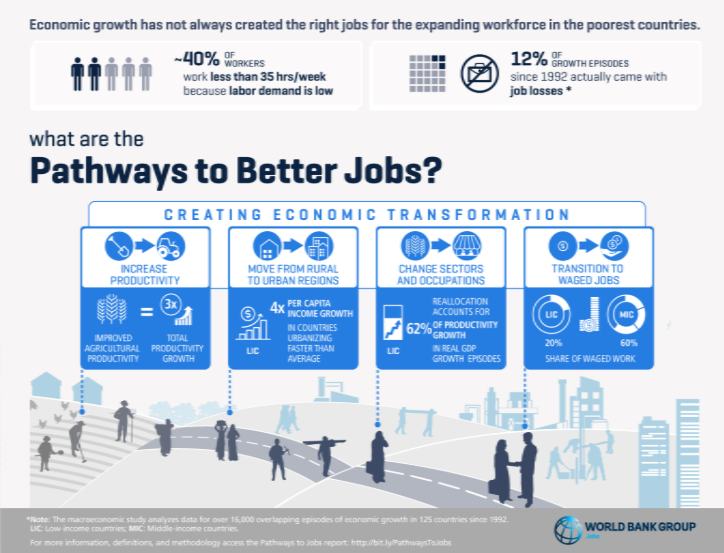Markets
Low-income Nations: Underemployment, Not Unemployment is Main Problem -Word Bank
- Low-income Nations: Underemployment, Not Unemployment is Main Problem -Word Bank
The World Bank Group identified underemployment as the main problem holding back growth in many low-income nations.
According to the Group, on average 40 percent of employees work fewer than 35 hours per week in low- and middle-income economies, while about a third of employed workers in low-come nations work over 45 hours a week, suggesting that hourly productivity is low in those nations, hence they need to work long hours to survive.
Also, labour force participation and job rates are high in low-income nations as most people work because they cannot afford to be idle, while in lower-middle-income nations, inactivity is higher and unemployment rates lower.
In the report titled ‘Pathways to Better Jobs in IDA Countries’, the bank said “Economic growth has not always created the right number and distribution of jobs for the expanding workforce in International Development Association (IDA) countries -the world’s poorest countries. There is no guarantee that economic growth will be labor intensive, nor that productivity gains will be shared by all workers. What drives GDP growth is productivity growth. Growth can be more inclusive when it is labor intensive, so more workers experience gains in their productivity by moving to better jobs.”
“Economic transformation is the main driver of productivity growth in low-income countries. 80 percent of labor productivity growth in low-income countries comes from the reallocation of labor from lower-productivity agriculture into relatively higher-productivity services and industry.”
Therefore, raising agricultural productivity is critical in improving economic growth and economic transformation in low and lower-middle-income countries.
